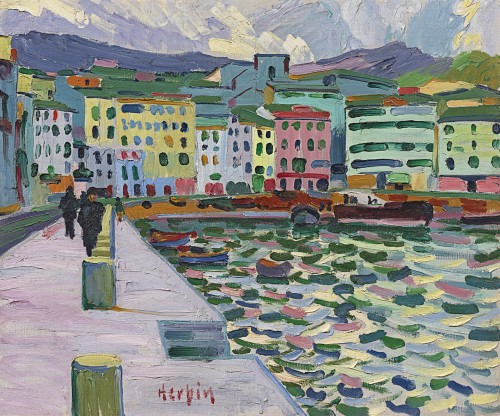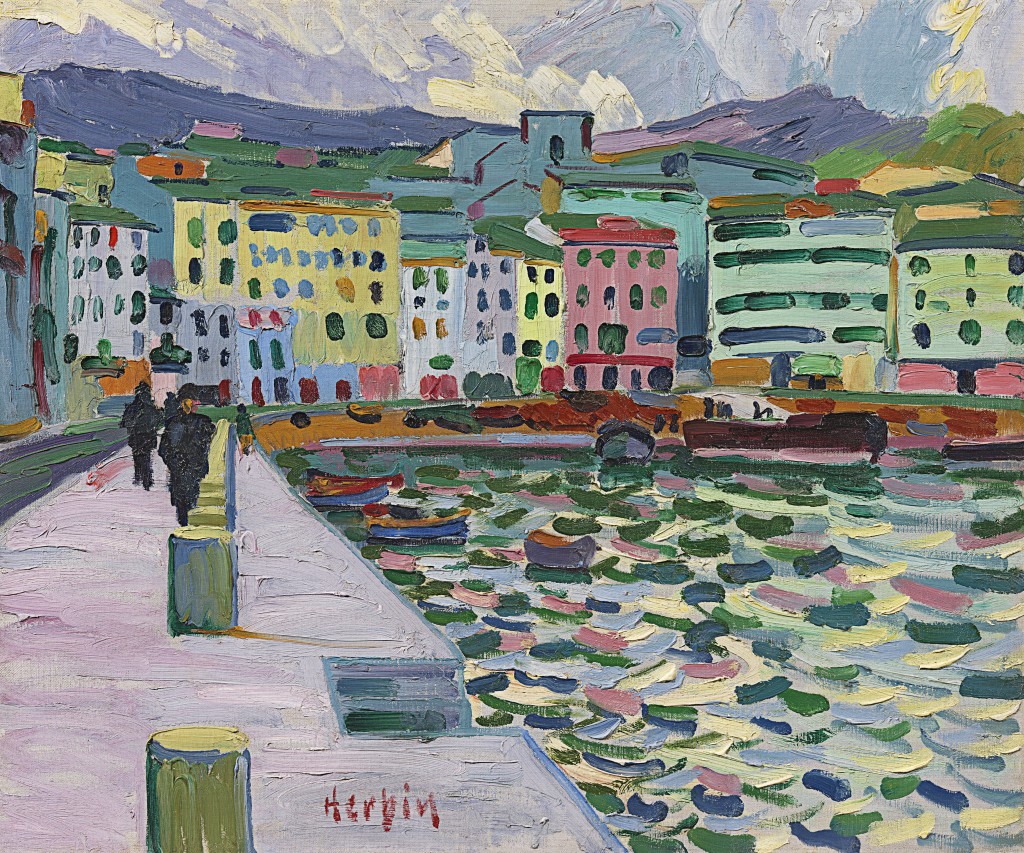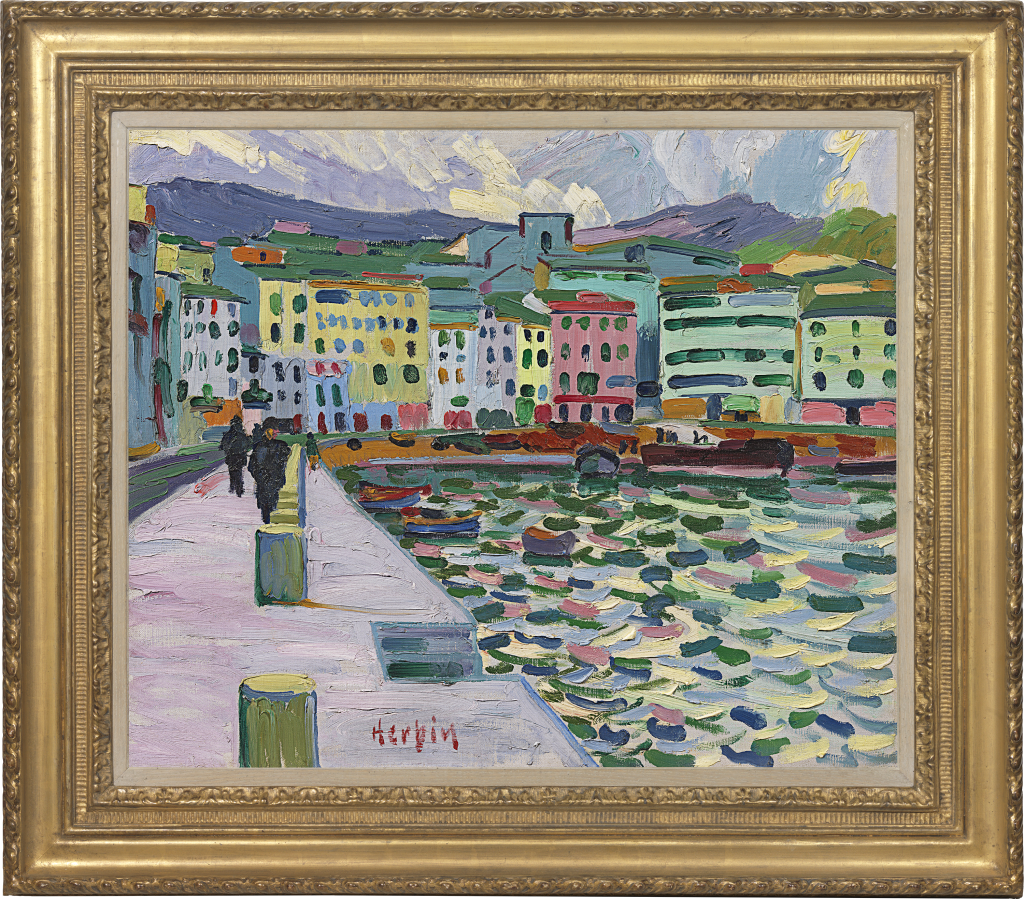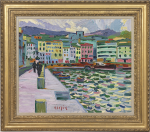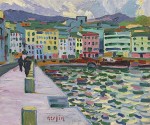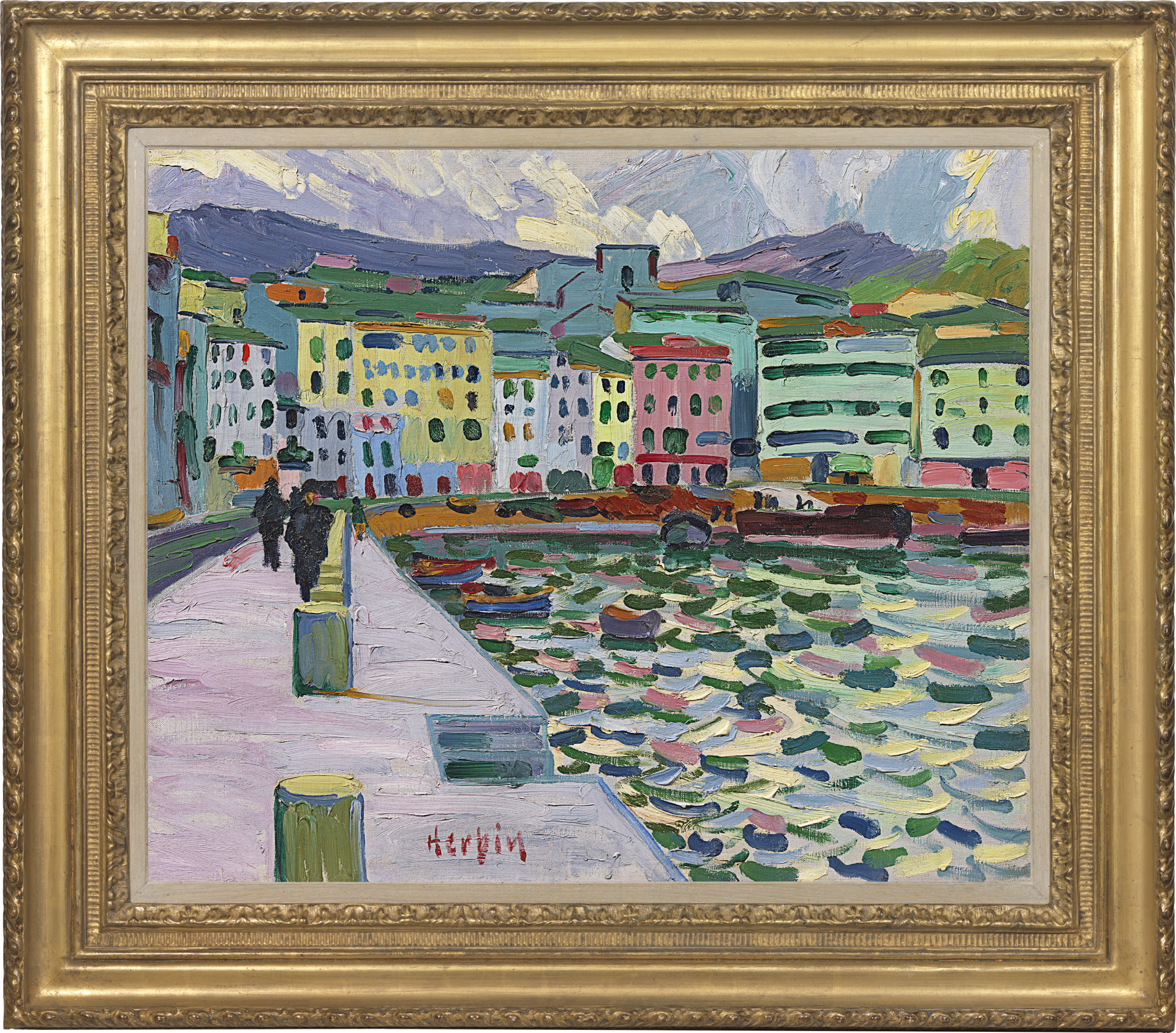AUGUSTE HERBIN
Quiévy 1882 - 1960 Paris
Ref: CC 154
Vue d'un port Corse I
Signed lower left: Herbin
Oil on canvas: 21 ¼ x 25 ½ in / 54 x 64.8 cm
Frame size: 28 ½ x 33 in / 72.4 x 83.8 cm
In a Louis XV style carved and gilded composition frame
Painted in 1907
Provenance:
Galeria Agora (Daniel Malingue), Paris
M Knoedler & Co., New York
Private collection, New York
Michelle Rosenfeld Fine Arts Inc., New York;
private collection, acquired from the above in 1992
Exhibited:
New York, M Knoedler & Co., Auguste Herbin Paintings from 1907 to 1958, 28th January-16th February 1978, no.1
Literature:
Geneviève Claisse, Herbin, Catalogue Raisonné de l’Oeuvre Peint, Les Éditions du Grand-Pont, Lausanne, La Bibliothèque des Arts, Paris 1993, no.112, illus. p.298
Chameleon-like, Auguste Herbin explored Impressionism, Divisionism and Fauvism before becoming an enthusiastic exponent of Cubism and Abstraction. This painting was made at the height of his Fauvist period. In the spring of 1907 Herbin was invited to stay in Corsica by the German collector, art dealer and critic Wilhelm Uhde, a major patron of his work. In March 1907, Herbin had exhibited at the Salon des Indépendants alongside artists such as André Derain, Maurice de Vlaminck and Georges Braque. The influence of their bright, anti-naturalistic palettes and energetic brushwork is evident in the fifteen Corsican landscapes that were the fruit of this tour.
Vue d’un port Corse I is richly gestural and dynamic. Herbin employs crescents of thick impasto to describe the shifting colours of the water in the bay and rectangular blocks of varied hues, dabbed with window embrasures, for the quayside houses. The geometry of houses and quayside is contrasted with freely-brushed, purple and green hills and the scribbles of a moving cloudscape. Herbin paints wet-in-wet to express the smooth surface of the quay and to give solidity to the posts which march down it. This vibrant painting conjures up the southern light and romantic ‘otherness’ of France’s Mediterranean island possession. Although at this point Herbin is still committed to representational art, however divorced from naturalism, the seeds of his future adoption of Abstraction can be seen in this composition.
AUGUSTE HERBIN
Quiévy 1882 - 1960 Paris
Auguste Herbin was born on 29th April 1882 in Quiévy, a small village in northern France near the Belgian border. From 1898 to 1901 Herbin studied at the Ecole des Beaux Arts in Lille. Influenced by the Impressionists and Fauve painters, he moved to Paris, working in relative isolation but exhibiting several paintings at the Salon des Indépendents in 1906. After 1909 Herbin’s work underwent a major stylistic change following his move to the Bateau Lavoir Studios, where he met Pablo Picasso, Georges Braque and Juan Gris and began his painterly investigation into Cubism. He exhibited again at the Salon des Indépendents in 1910, where his paintings were hung alongside the work of several other prominent Cubist painters, including Jean Metzinger, Albert Gleizes and Fernand Léger. In 1912 Herbin’s paintings were exhibited at the influential Salon d’Or and in the same year he held his first one-man show at the Galerie Clovis Sagot in Paris.
Through each of these alliances, Herbin gradually turned to Cubism, producing his first Cubist painting in 1913. However, by 1917 he had progressed beyond painting in this style in favour of creating works of an abstract nature using pure geometry. It was at this time that Herbin was adopted by the art dealer Léonce Rosenberg, who introduced him to the group of artists centred around his Galerie de l’Effort Moderne. Rosenberg exhibited Herbin’s work there on numerous occasions between 1918 and 1921.
In the years following, Herbin alternated between artistic styles, returning to a more figurative style of painting between 1922 and 1925. In 1926 he revisited abstraction, which he continued to develop up to (and beyond) 1931, when he co-founded the artists’ association Abstraction – Création. In 1949 Herbin published L’Art Non- Figuratif Non Objectif, in which he explained his ‘alphabet plastique’, a compositional system of painting abstract art founded on the structure of letters, of which the pure geometrical shapes and positive colours continued to have much influence over the following generation of artists.
In 1953 Herbin suffered a lateral paralysis, but continued to paint using his left hand alone. He died in Paris on 31st January 1960.

